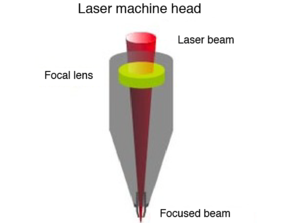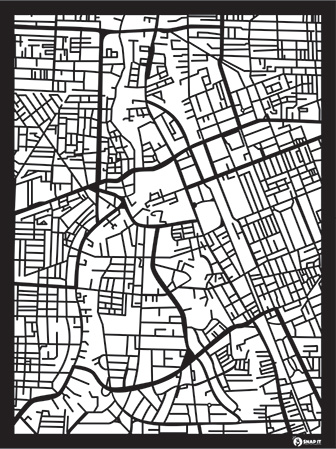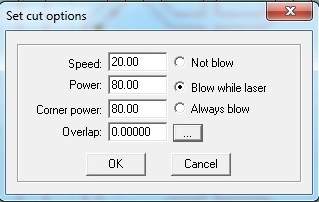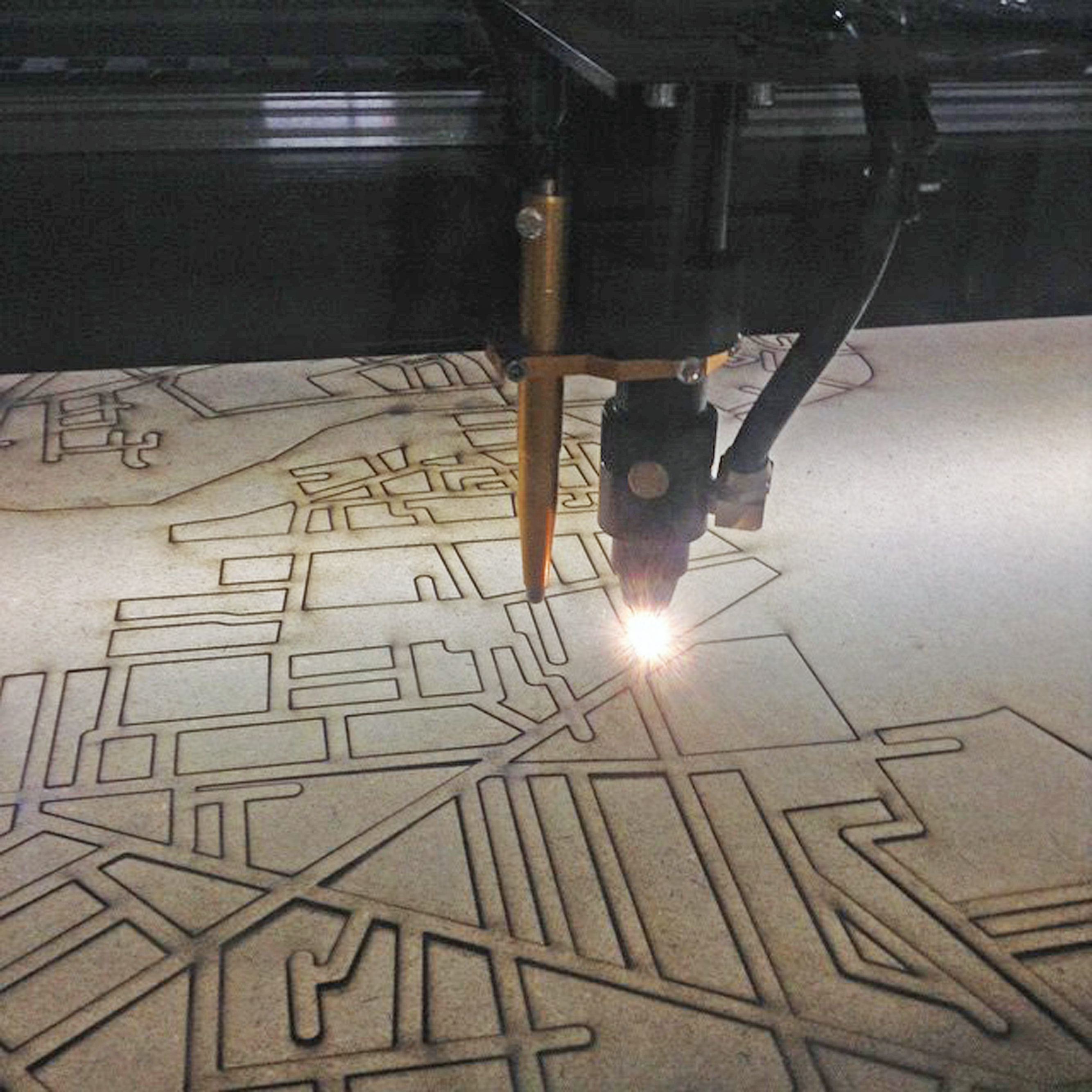The laser cutting process
Laser cutting is a precise method of cutting a design from a given material using a CAD file to guide it. There are three main types of lasers used in the industry: CO2 lasers Nd and Nd-YAG. We use CO 2 machines. This involves firing a laser which cuts by melting, burning or vaporizing your material. You can achieve a really fine level of cutting detail on with a wide variety of materials. Bare in mind that CO 2 lasers can't cut metals and hard materials, they can however engrave them.
Laser head and tolerance
The beam is emitted from what's called the 'laser tube' and is reflected by several mirrors up into the 'laser head' (like a periscope). Within the head is a lens that finely focuses the beam onto the material surface for cutting or engraving.
The kerf refers to how much of the material the laser takes away when cutting through (the width of the groove made while cutting). This varies from material to material and is also dependent on the laser beam tolerance. All our machines have a very fine tolerance.
Step 1: Preparing your artwork
You send us your artwork and we check to see if it is fine for the laser cutter and the material you would like to cut. The machine reads vector strokes of hairline thickness in red or as thin as you make them.
Step 2: We'll configure the laser cutters settings
We lay your chosen material in our machine bed and configure the machine to cut your artwork. We adjuct the power, speed and frequency to suit your specific material. The maximum sheet size we can cut is an enormous 2400mm x 1200mm.
Step 3: We process your job
The machine will then follow the path of your drawing strokes to cut the components you have drawn. Depending on the material, we usually use a protective backing during the laser cutting process that can peeled away after the cutting is complete. This protects the surface from heat and burn marks.




